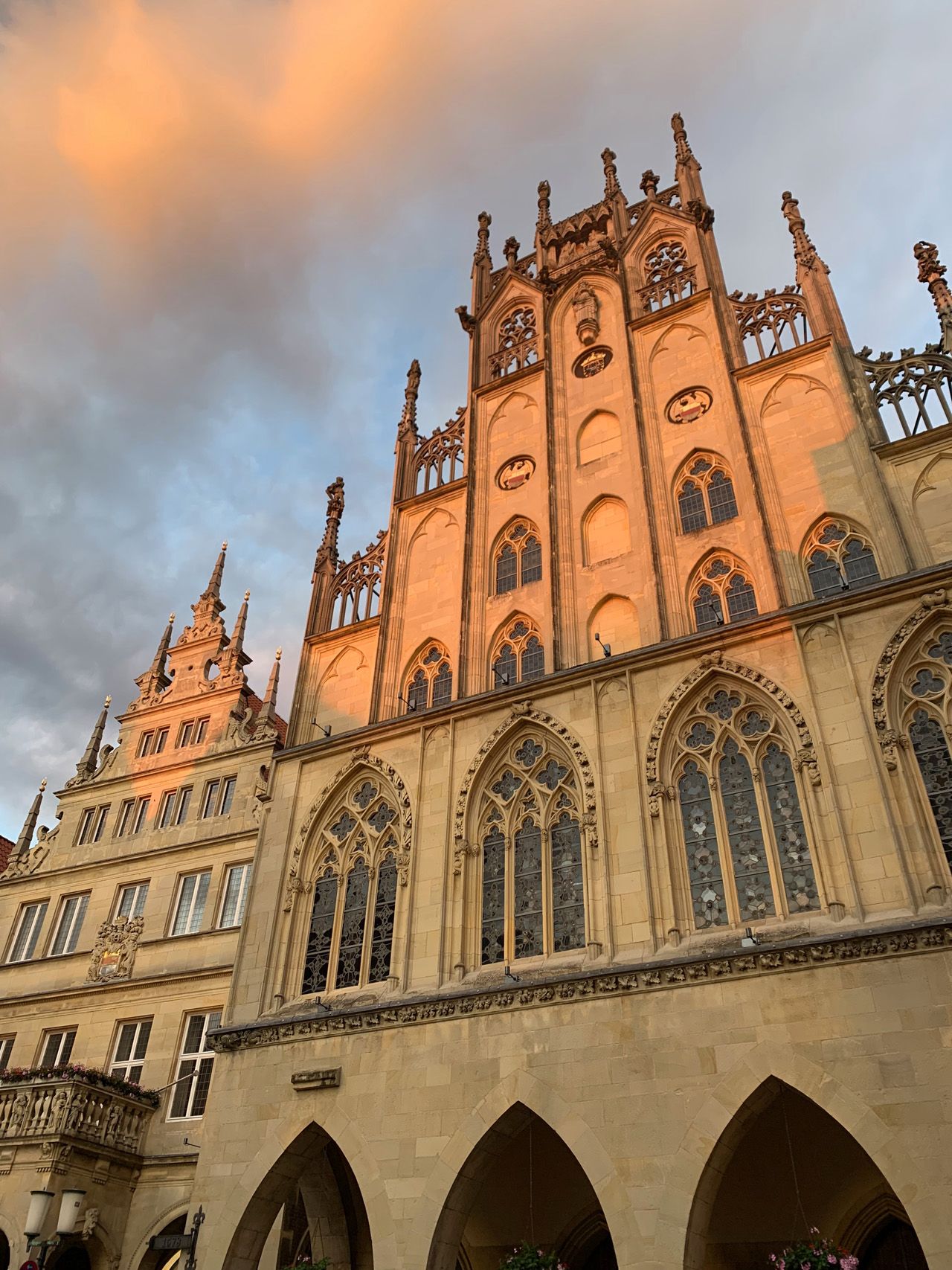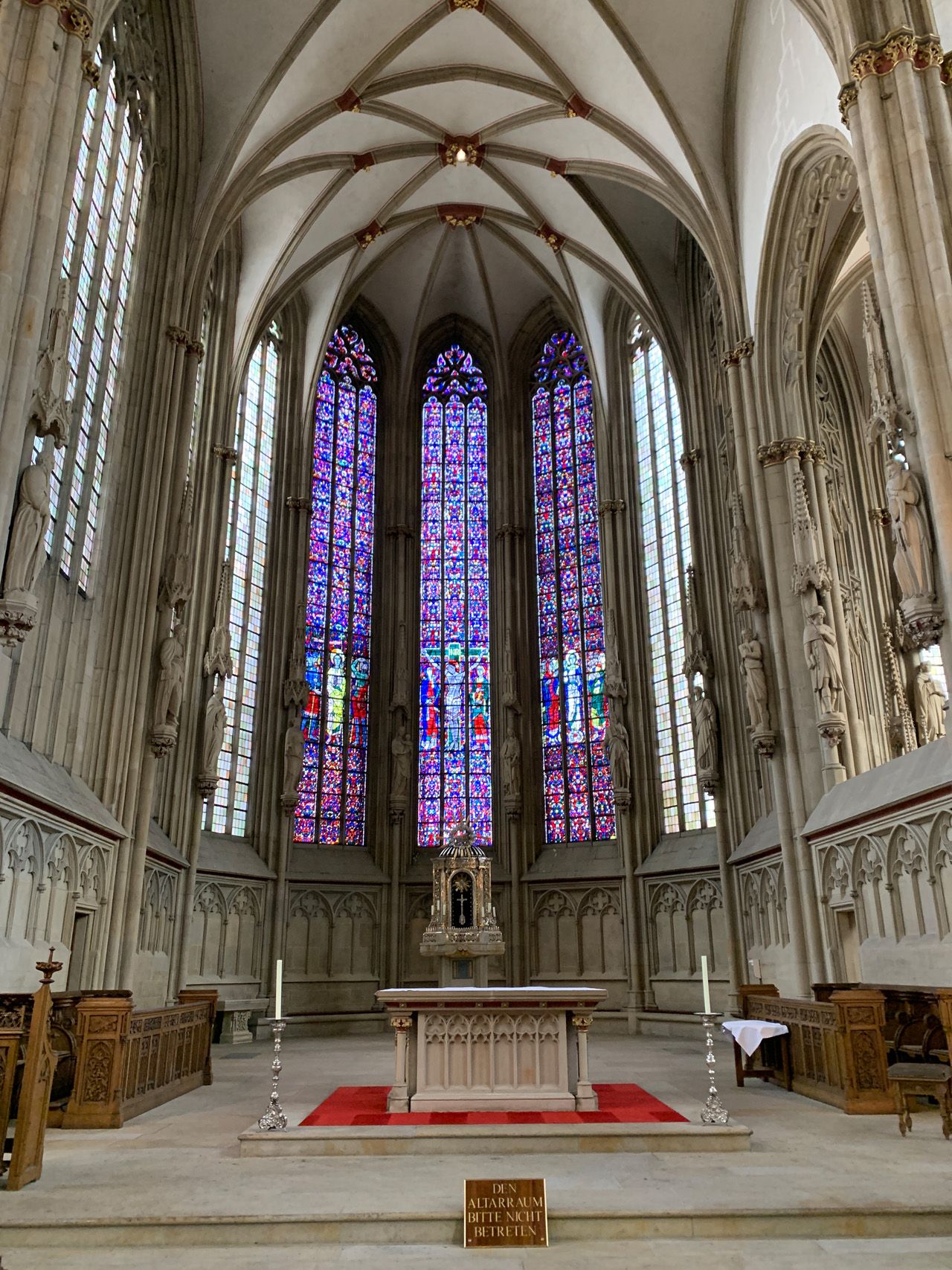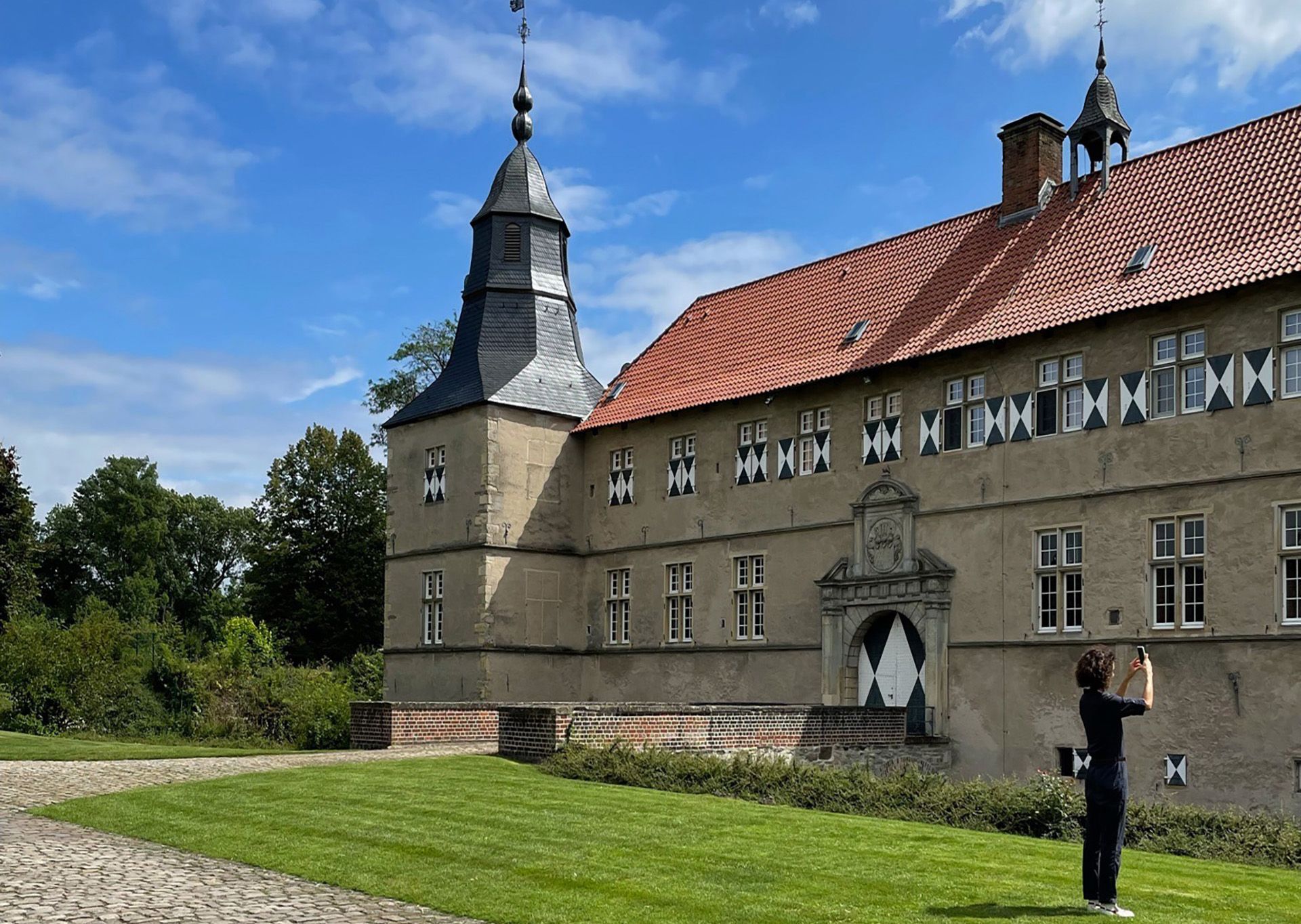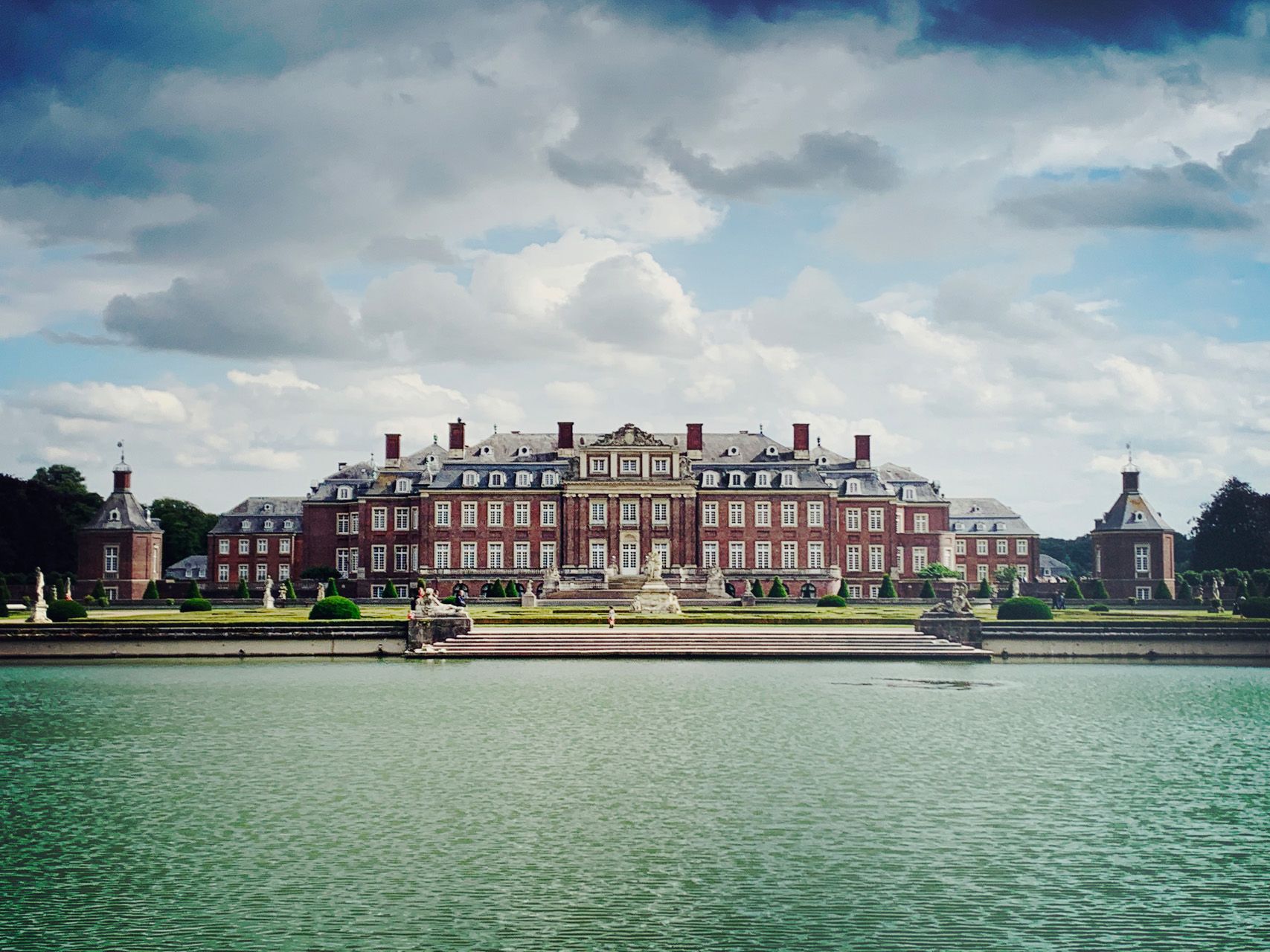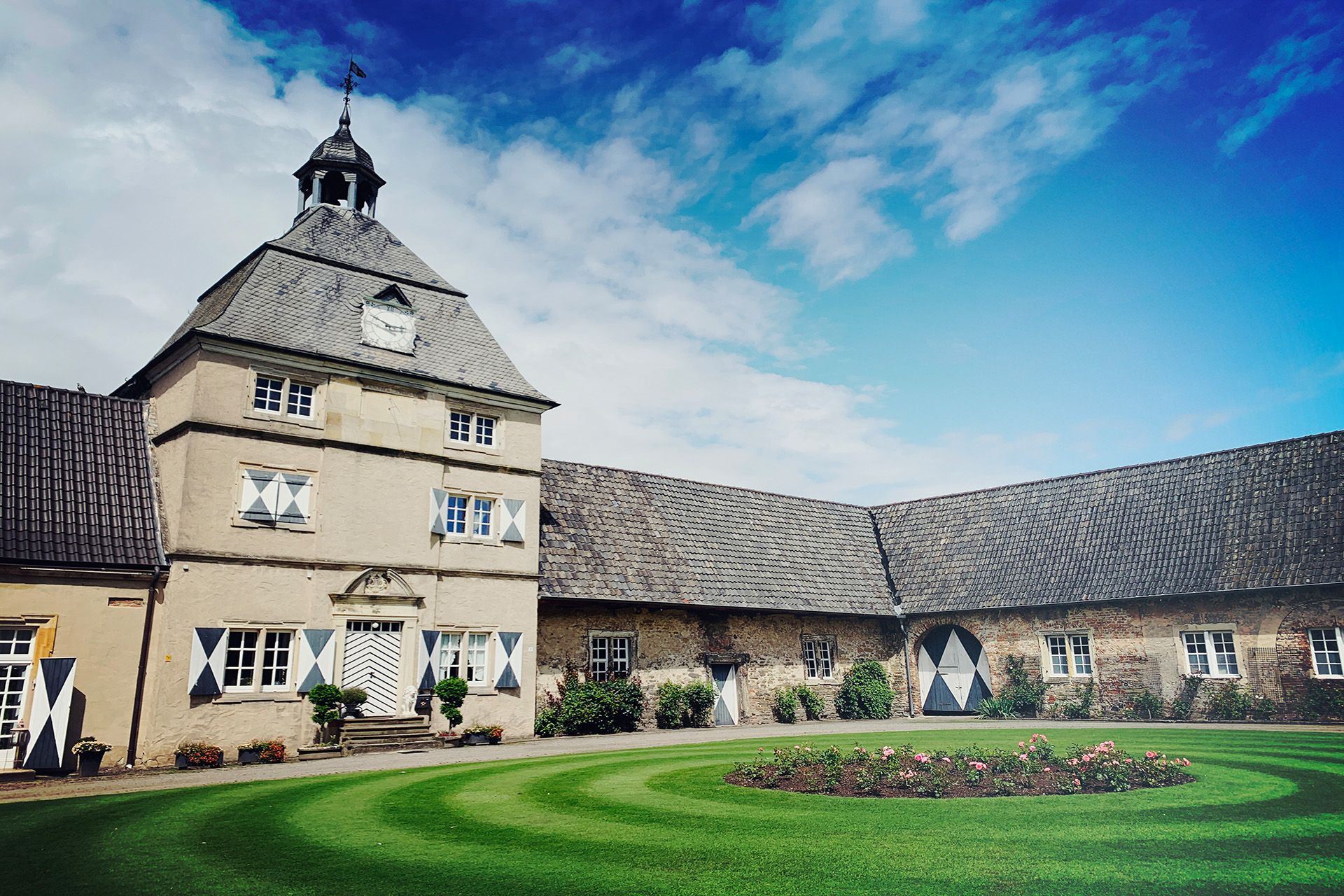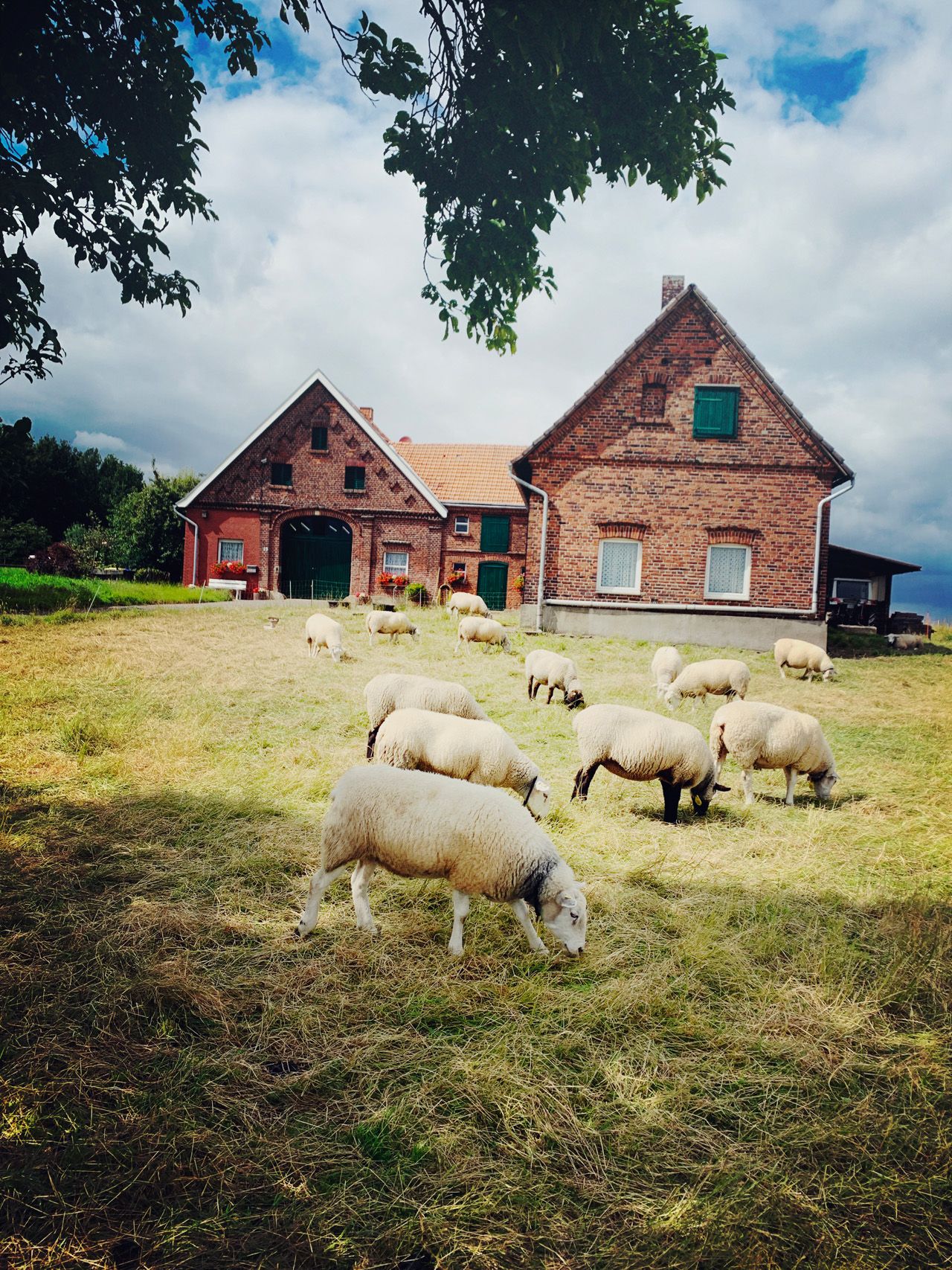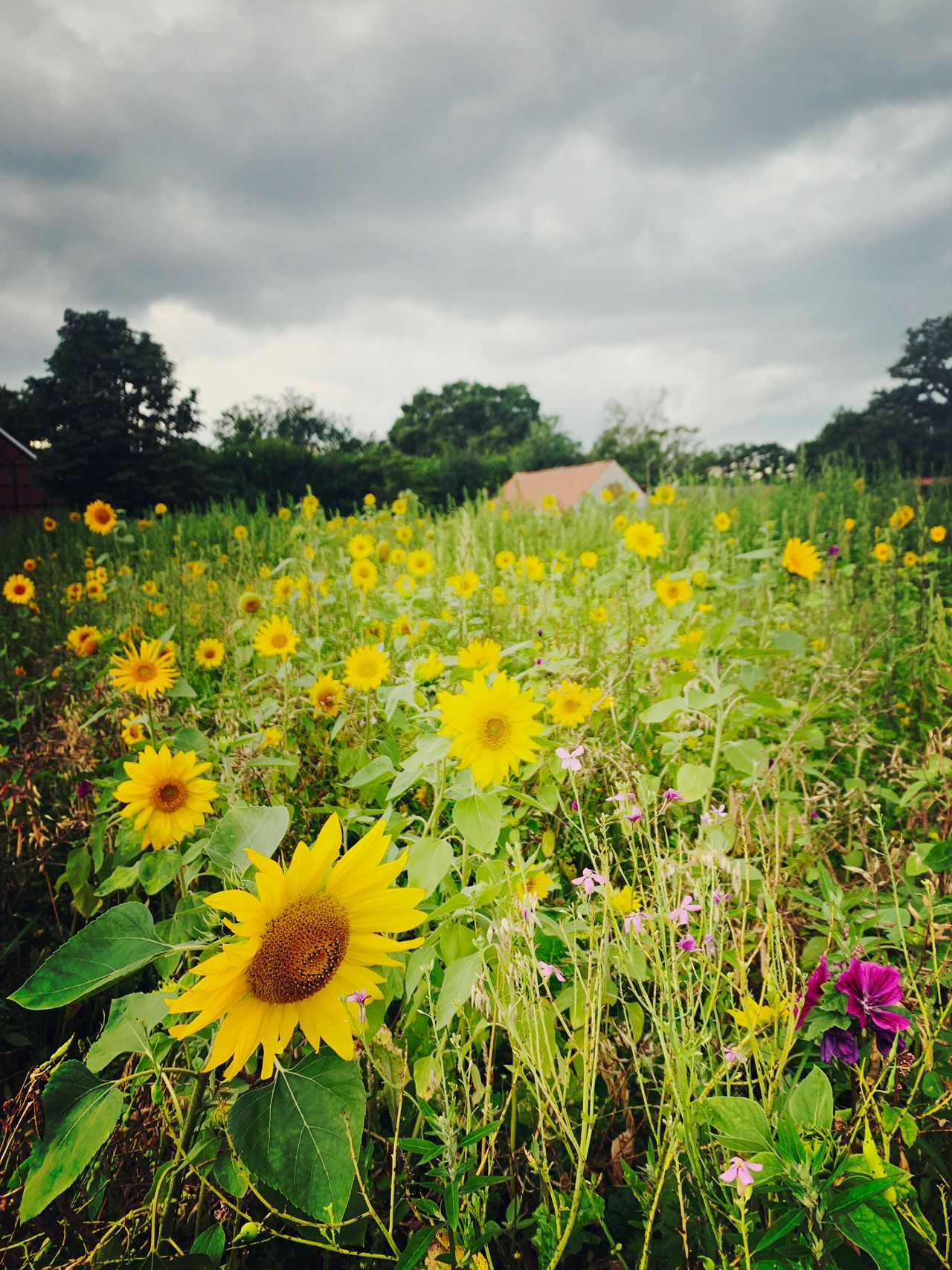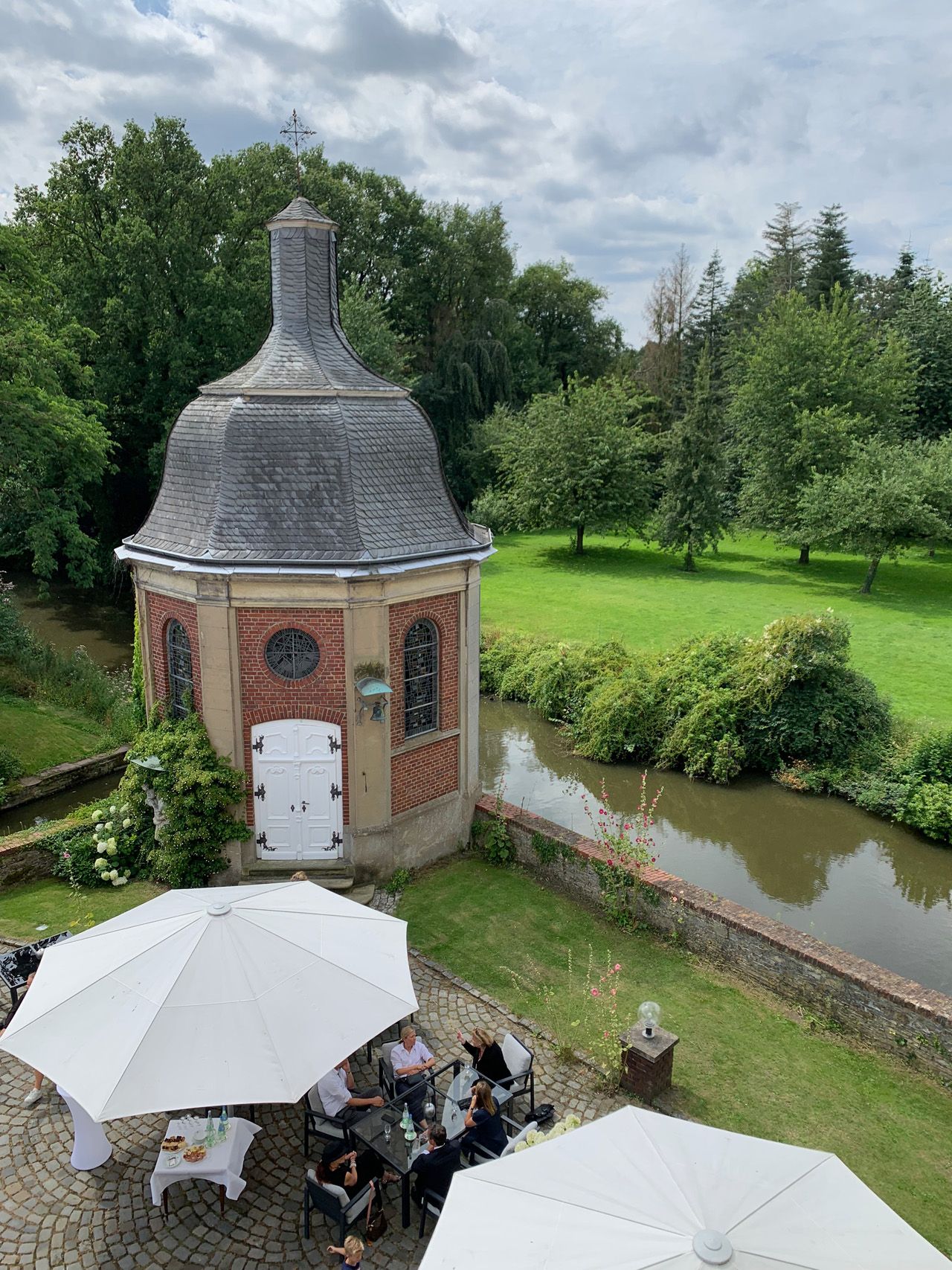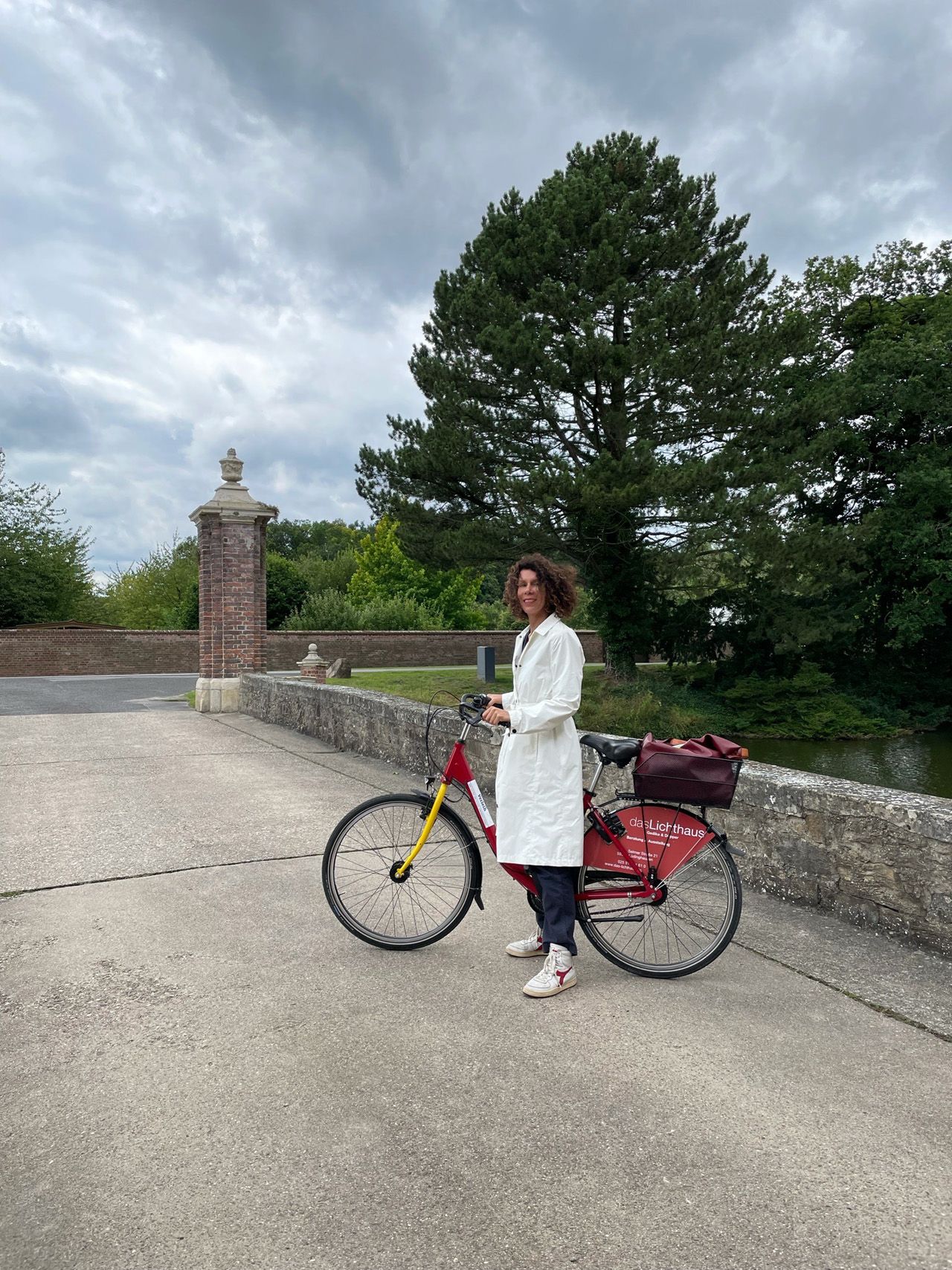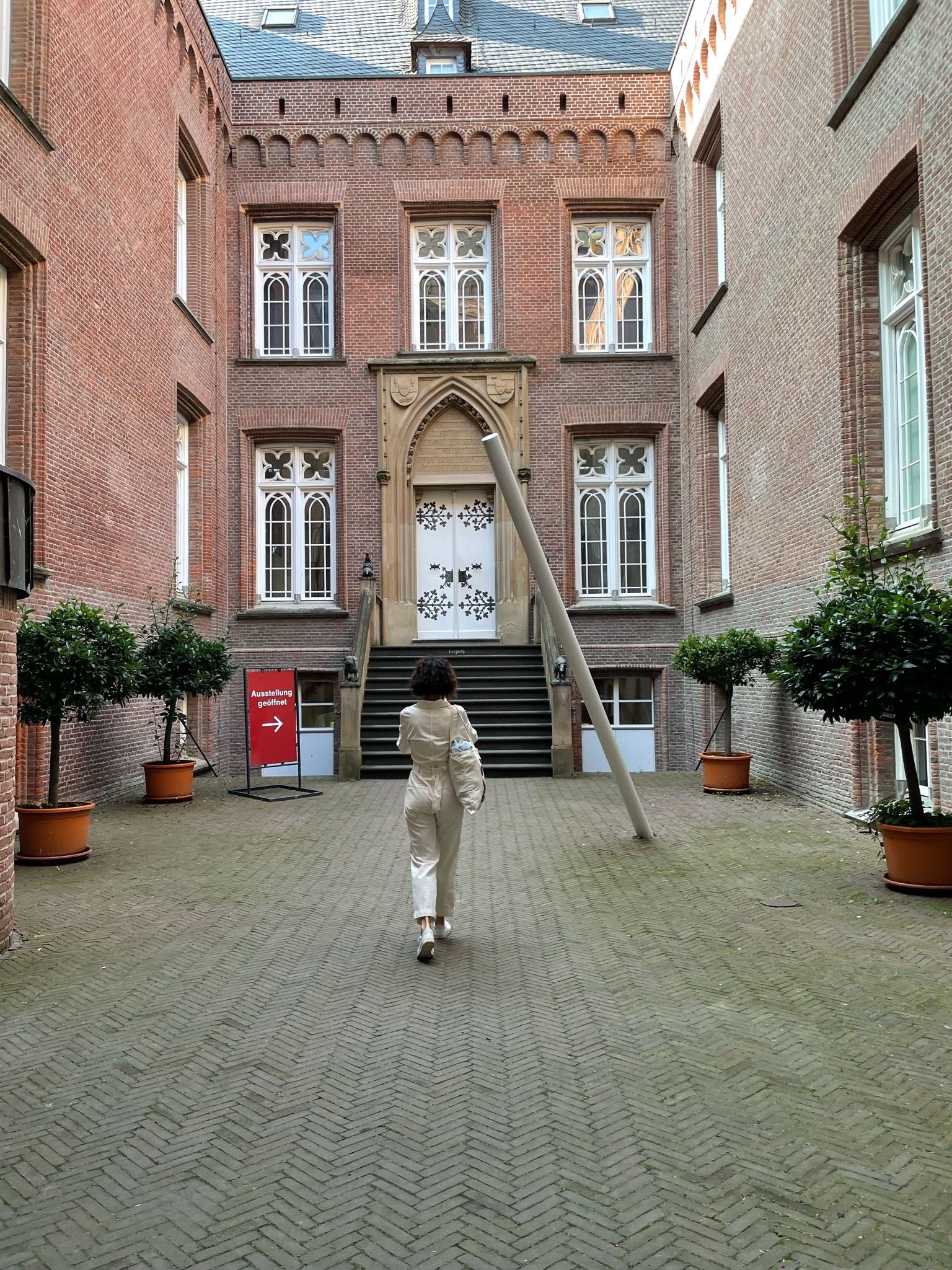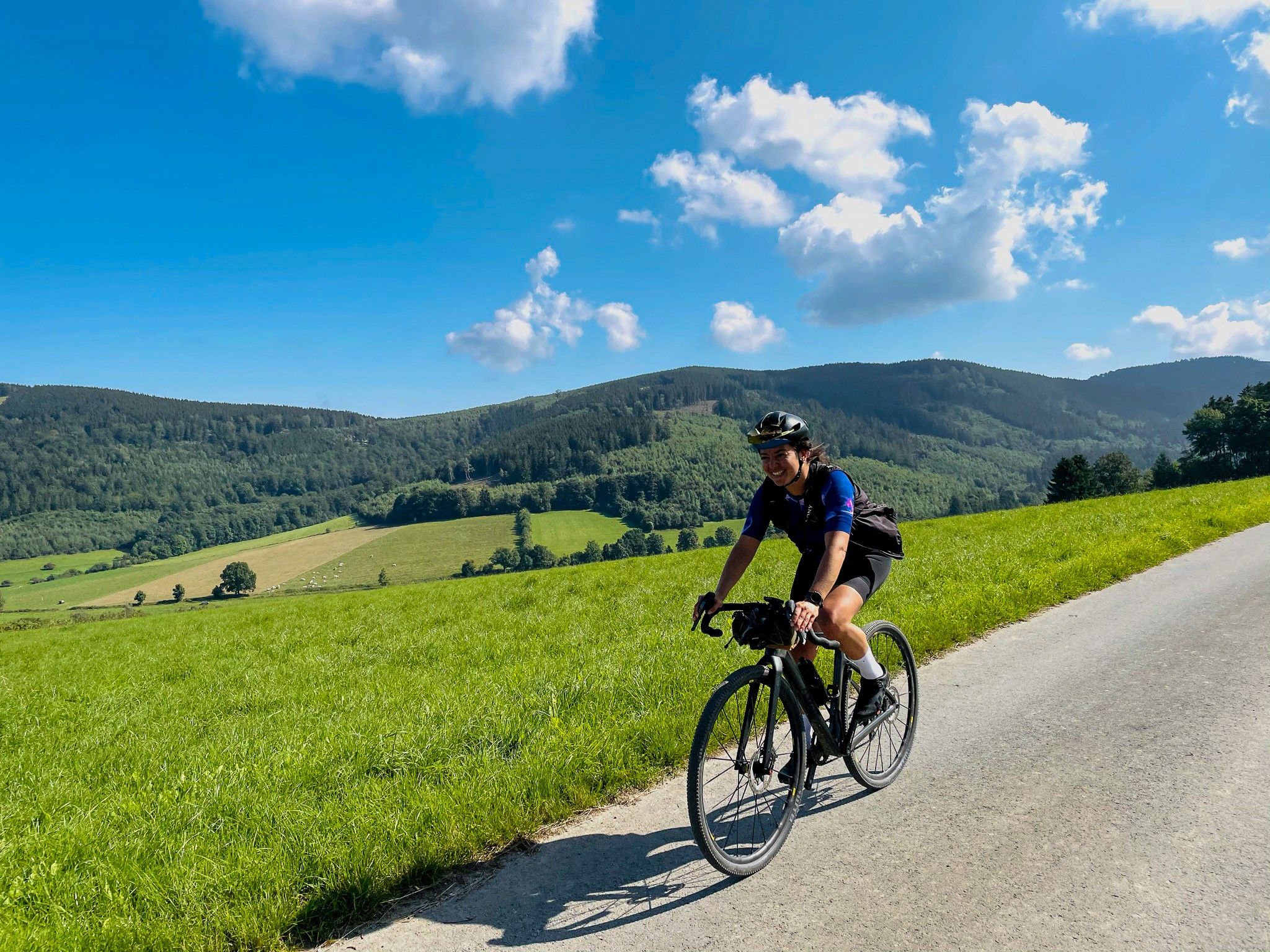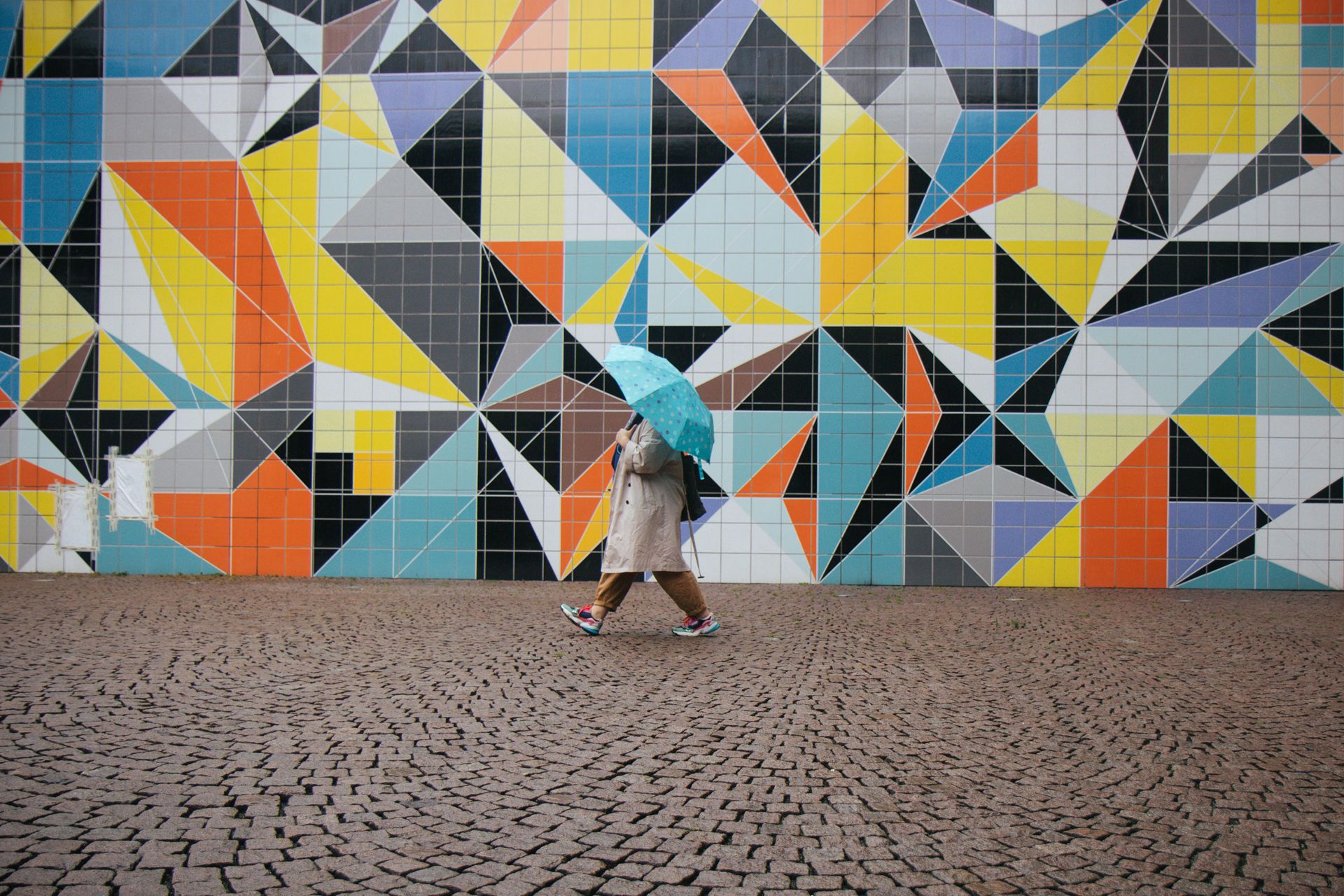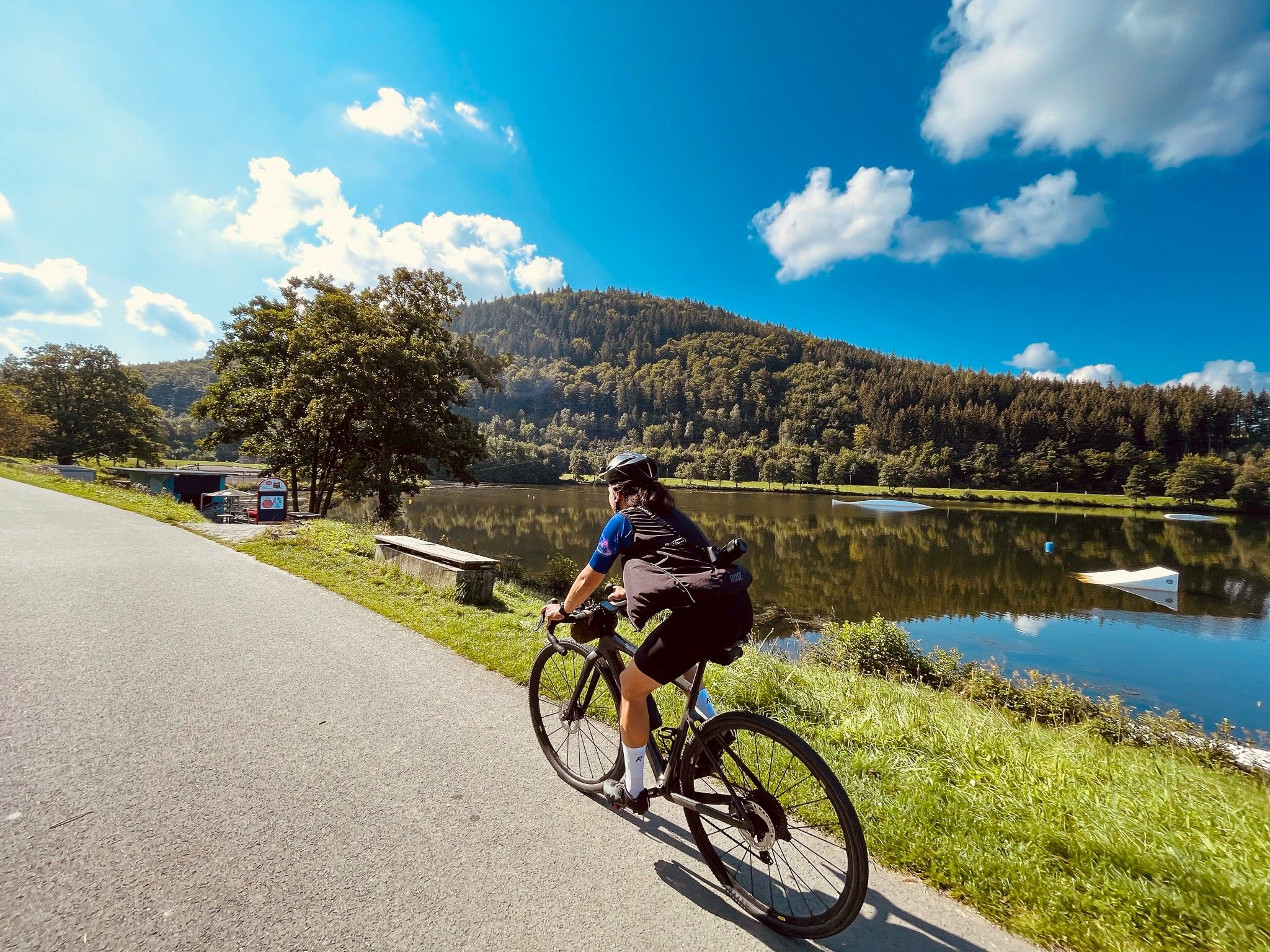The Münsterland region is the historical site of the Peace of Westphalia, but also home to art and modern sustainability. A journey of discovery leads along the 100 Castles Route from Münster's Prinzipalmarkt to moated castles, a forester's estate and remote country neighbourhoods, uncovering stories that are anything but dusty.
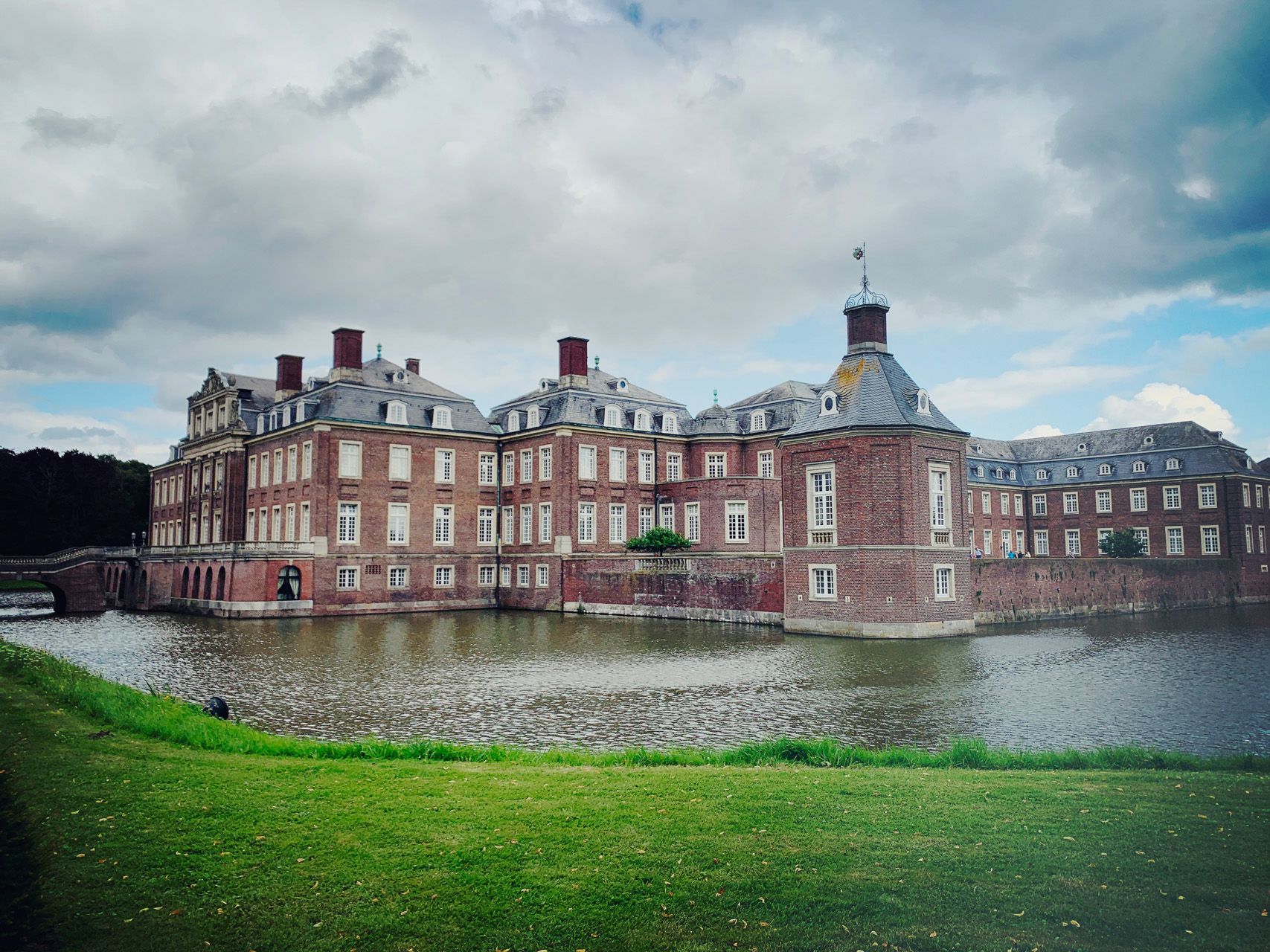
Amidst the castles and palaces of the Münsterland regionLet's go!
What a reception! She is already waiting for me in room no. 1 of Hotel Schloss Wilkinghege: with her hair parted twice, a crown of hair and wearing a festive brocade dress. The portrait of the poet Annette von Droste-Hülshoff by Johann Joseph Sprick has a place of honour between the two floor-to-ceiling mullioned windows that look out over the old trees in the castle park. Did the high-born lady ever spend the night in this room? Not at all unlikely. After all, the moated castle on the outskirts of Münster belonged to her brother, Werner-Constantin Baron Droste zu Hülshoff, for a time.
Over the next few days, I will be following in the footsteps of the Westphalian nobility, or rather: cycling. The Münsterland region is famous for its cycle paths and, thanks to its 1200 years of feudal history, is dotted with palaces and castles, manor houses and manor farms, all of which are connected by the 960 kilometre-long 100 Castles Route.
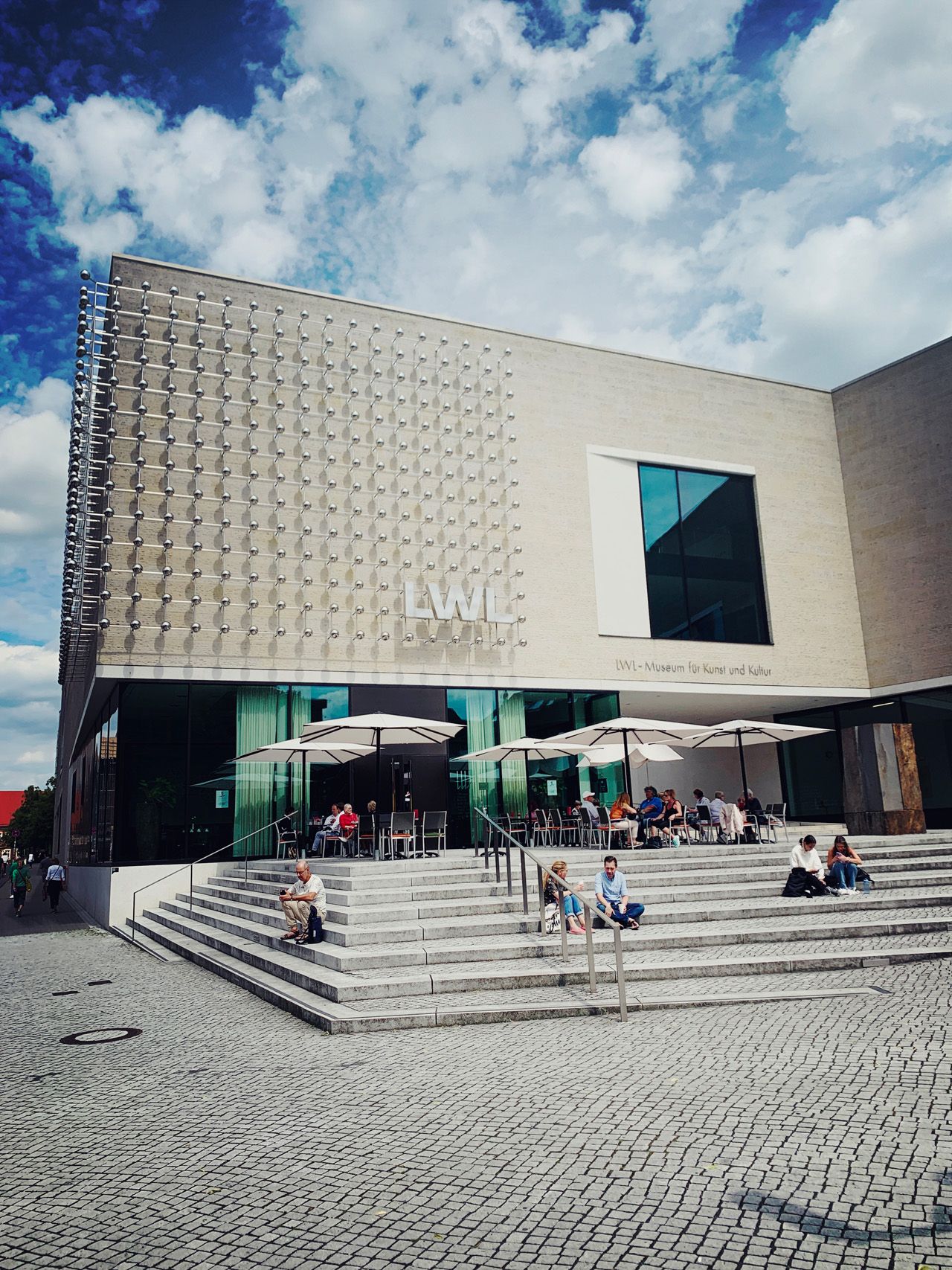
The cycling cityThe future in the here and now
But before I set off on my journey to the historic buildings in the surrounding area, I want to take a look at the heart of Münsterland, the city that is not only known for its rich religious and political past, its art and cultural treasures, but also for its sustainable lifestyle: Münster.
A bus picks me up at the Wilkinghege junction and takes me directly to the city centre. In addition to the buses, many of which are equipped with electric drives, it is above all the self-confident Münster cyclists who dominate the traffic in the city centre. How pleasant! Of course, you have to be careful if you want to cross the main traffic arteries, such as the promenade that encircles the city centre. Three students on their Dutch bikes approach at a brisk pace: I save myself with a big step to the side of the road. But the lesson is quickly learnt and soon I feel like I'm in a model test. Like in a world that is living a future that is still dreamt of elsewhere.
In addition to the LWL Museum of Art and Culture on Cathedral Square, which regularly makes a name for itself thanks to its collection and top-class exhibitions, Münster is also home to Germany's only Picasso Museum. The museum has 800 works by the world-famous painter. Currently on display is poster art by the master himself, but also by other well-known artists. From Henri de Toulouse-Lautrec, who was one of the most important representatives of poster art around 1900 with his brightly coloured prints for the Moulin Rouge, from namesake Henri Matisse, the married couple Sonia and Robert Delaunay and Joan Miró, but also from pop artists such as Keith Haring and Robert Rauschenberg.
Two posters by Picasso touch me the most: an exhibition announcement from 1973 shows one of his last works. A self-portrait as a young boy, painted on the canvas with a brisk style and a few broad brushstrokes. Like many of his late paintings, it bears witness to his race against time. Picasso did not live to see the opening in Avignon - he died a few weeks after printing the poster. Opposite is Picasso's iconic dove of peace, a brush lithograph. It was the official poster of the 1949 World Congress of Partisans of Peace and the Picasso dove later became a political symbol worldwide. It was through this work that the French painter became known to millions of people.
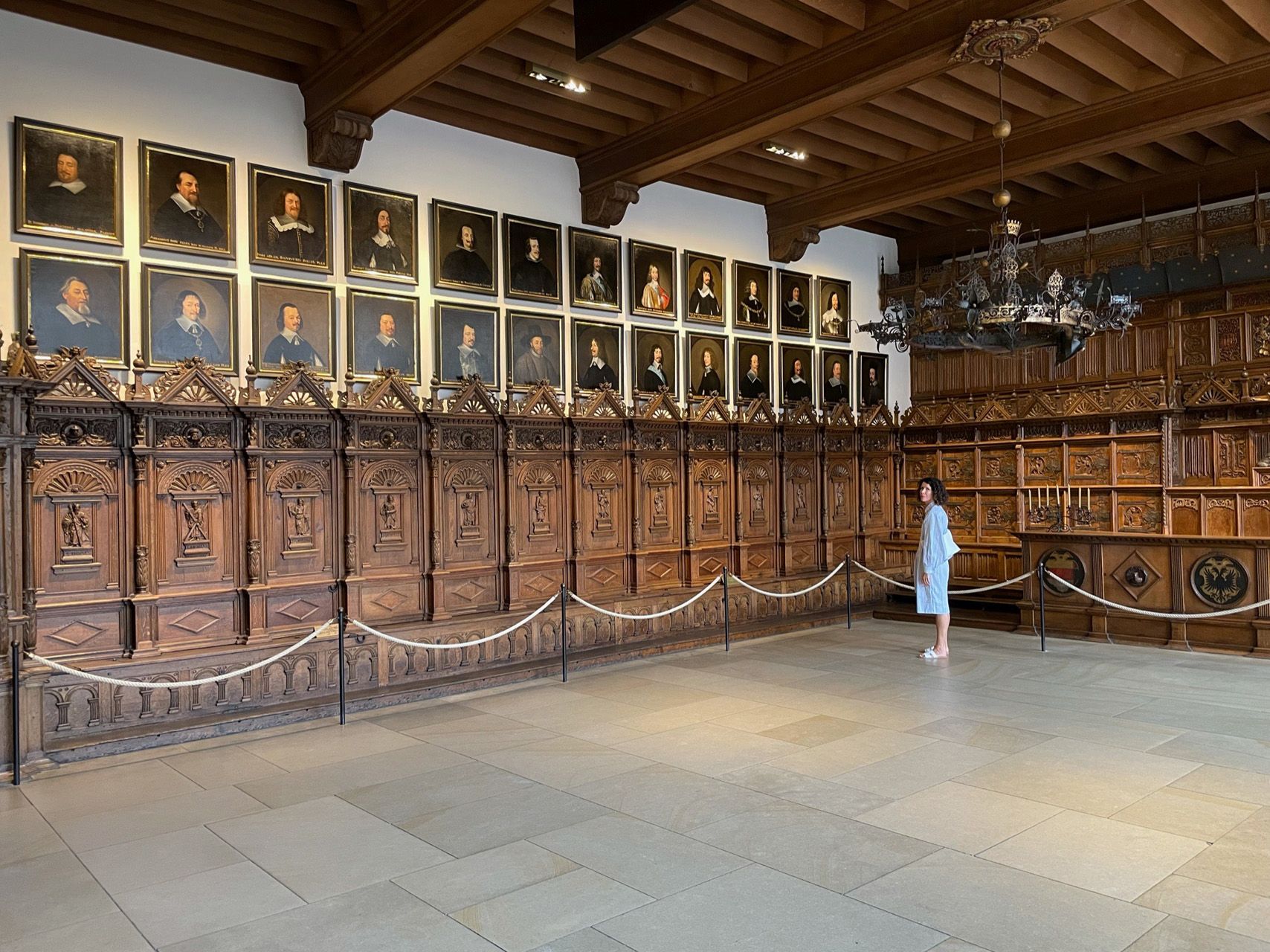
On the trail of the Peace of WestphaliaAnno 1648
In fact, the dove of peace had already done a great deal of work in Münster long before Picasso. The Peace of Westphalia, which ended the Thirty Years' War, was signed in the cathedral city in 1648. On the way to the Peace Hall in Münster's Historic Town Hall, the memorial to this fundamental event for Europe, I startle a few of their grey-feathered conspecifics as they strut across the cobblestones of the Prinzipalmarkt, cooing importantly and craning their necks.
Inside, it is quiet and cool. Outside, the present is raging; here, behind the door of the Friedenssaal, history comes to life. As I enter the room, which is decorated with wood panelling and rich carvings, the audio guide starts. The voiceover tells me about the years of negotiations that preceded the Peace of Westphalia. I walk through the gallery of European envoys, diplomats and lawyers to my left and discover a youthful portrait of Louis XIV in the centre of the top row, who stands out red-cheeked from the ranks of dark-clad dignitaries and sovereigns. On the far right of the row of pictures, the negotiator Fabio Chigi has a place of honour. It was he who regularly visited the Catholic envoys who were accommodated in the neighbourhood, conveyed messages to them and consulted with them. I learn on the audio tour that the envoys never gathered together in one place for consultations. No wonder, then, that the peace negotiations dragged on for three years! I admire Chigi's diplomatic skills - he later became Pope, by the way.
1648, the historic year, is still very much alive elsewhere in Münster. However, Café 1648 on the 11th and 12th floors of a new building in the pedestrian zone is almost an insider tip - if you don't know the place, you won't find the inconspicuous side entrance on Heinrich-Brüning-Straße straight away. One thing is certain: there is no better place to enjoy the panoramic view of the city than in the designer armchairs waiting in cosy niches in front of the floor-to-ceiling windows. A cappuccino or aperitif with a view of the cathedral, St Lamberti and the Liebfrauenkirche, which rise up between the rooftops, is a special treat.
I end the evening in the shadow of St Clement's Church, which, like Münster Castle, was designed by the master of Westphalian Baroque, Johann Conrad Schlaun. My vegan celeriac schnitzel with regional walnut pesto at Restaurant Feldmann tastes delicious. Owner Christian Feldmann, whose great-grandmother founded the restaurant in 1929, and his kitchen team effortlessly manage the balancing act between tradition and modernity. The three friends at the next table with the well-fitting grey hairstyles, who have stopped in after their book shopping and are discussing literature and religion over a Wiener schnitzel, also seem to be enjoying the fresh regional ingredients and the Münsterland ambience at Feldmanns for more than just the first time.
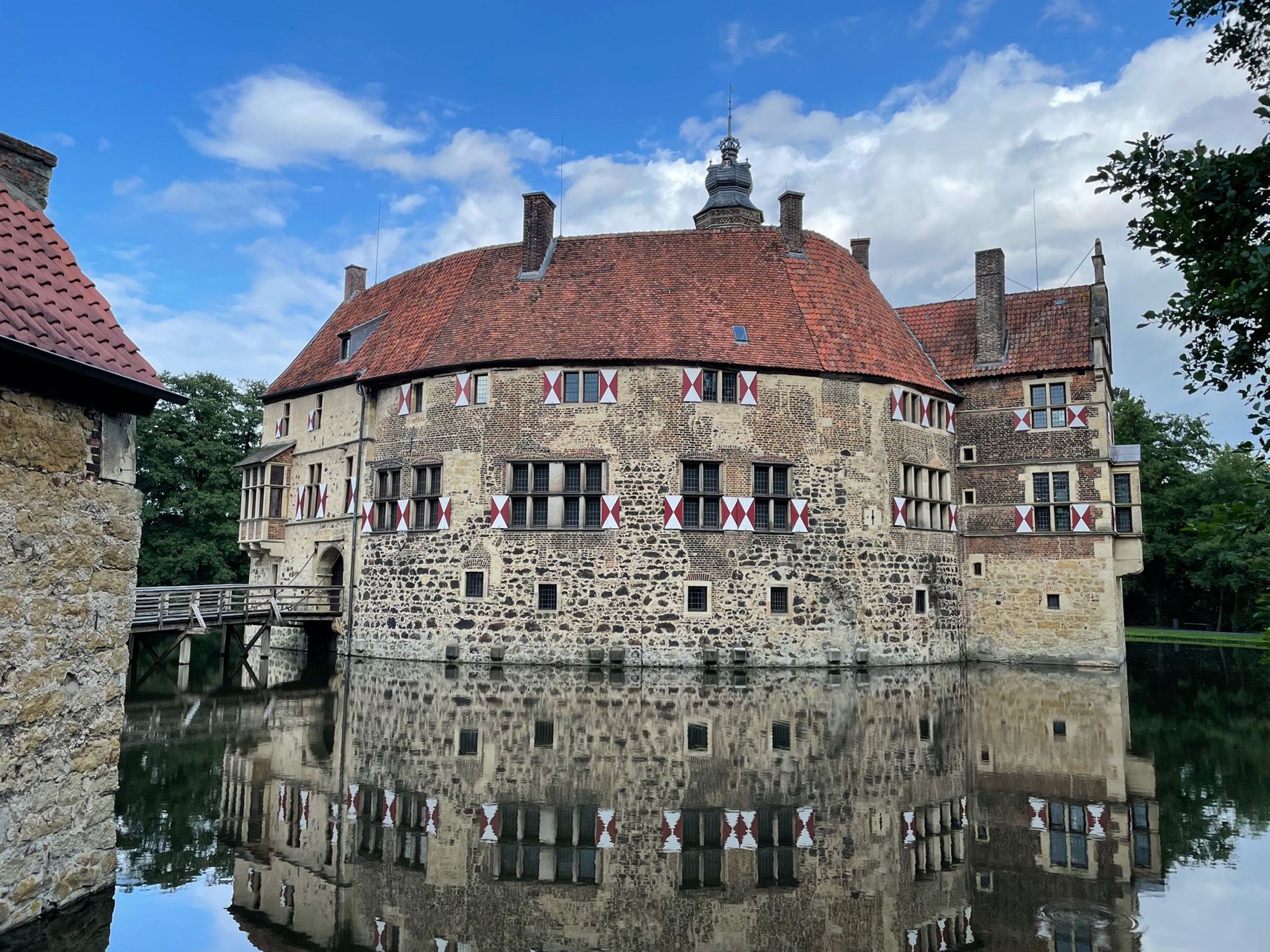
A trip to the impressive Vischering CastleOf bloody feuds
"Until the early 19th century, the Münsterland was divided into small dominions," explains Swenja Janning, the cultural officer of the Coesfeld district, to me the next morning on a tour of Vischering Castle. So that's why there are so many castles and fortresses in the area! I want to explore some of them on a cycle tour today, despite the low-hanging clouds. With its moat, moats, defence walls and drawbridge, Vischering is one of the most impressive examples of medieval fortified castles, a picture-book castle straight out of a child's fantasy. And the castle is indeed very popular with children. Interactive media stations explain medieval life to young and old in the most vivid way and the entire aristocratic residence is filled with stories and anecdotes about feudal life.
The legend of a bloody feud from the 15th century, in which an old nobleman and an iron collar play the main roles, is particularly creepy: Swenja Janning leads me into a room where the corpus delicti is on display. "The legend is about an inheritance dispute between two families. A family vying for land attacked knight Lambert von Oer and put an iron collar with curved thorns around his neck. If he surrendered the disputed land, he would receive the key to the lock of the instrument of torture. But as a true, indomitable Westphalian, Knight Lambert had no intention of giving in. He rode the thirty kilometres to Münster to have a Schmid relieve him of the cruel burden." Just the sight of the sharp thorns on the heavy collar sends a shiver down my spine.
As a special treat, I climb the Vischering tower with Swenja Janning, which is not actually accessible to visitors. The view of the countryside from up here is magnificent and I can hardly wait to explore the other castles and fortresses. A little later, I cycle out into the countryside. Flocks of windsurfing swallows accompany me and outdo each other with daring aerial manoeuvres. Cornfields and oak avenues form dead-straight corridors and I'm doubly lucky: the wind kindly pushes me eastwards and blows the clouds aside at the same time. Bit by bit, more and more sky becomes clear.

Stately discovery tourThorny roses in the countryside
After a good half hour's drive, I reach Westerwinkel Castle, one of the earliest baroque moated castles in Westphalia, which, far from a larger village and surrounded by meadows fenced in by hedges, looks like a Sleeping Beauty's castle. The self-contained four-winged complex rests on two islands in the picturesque moats. The pavilion towers have onion-domed roofs, each topped with a weather vane. In the park surrounding the castle, some golfers pursue their passion. This is not uncommon, especially in privately owned castles. A stately home like this needs to be maintained!
There are over one hundred castles to discover in Münsterland. Among them is the Versailles of Westphalia: Nordkirchen Castle, around 26 kilometres from Westerwinkel. So keep pedalling! On the avenue leading to the castle grounds, I am overtaken by a gleaming chrome Opel Kapitän with tulle bows on the side mirrors. A wedding party. And, as I soon realise, not the only one. One bride and groom after another drive up to Schlossplatz to have their photo taken in front of the sweeping baroque façade from the early 18th century. The flowing veils are the icing on the cake in an already romantic setting. I circle the extensive building, cycling through the stately park to admire the garden view. The steps of the large water basin, which adjoins the ornamental beds, invite you to linger.
After around fifty kilometres of cycling, I feel a little peckish. It's a good thing that a visit to the Böcker family's Forstmannshof is on the agenda before dinner. Junior Benedikt Böcker gives me a warm welcome on the terrace of the manor house and is happy to provide information: my ancestor Anton Josef Böcker distilled the first grain here on the farm in 1848, and today the family's raspberry brandy is particularly well known. It soon becomes clear why: the aroma that fills my nose after Benedikt Böcker opens a bottle for tasting transports me to a raspberry plantation. Eight kilos of fruit go into a single litre of raspberry brandy. It is also sold in the farm shop, alongside other schnapps and liqueurs. But fresh raspberries, strawberries and asparagus are also on offer, as well as jams and various types of honey, smoked and air-dried sausages and, and, and.
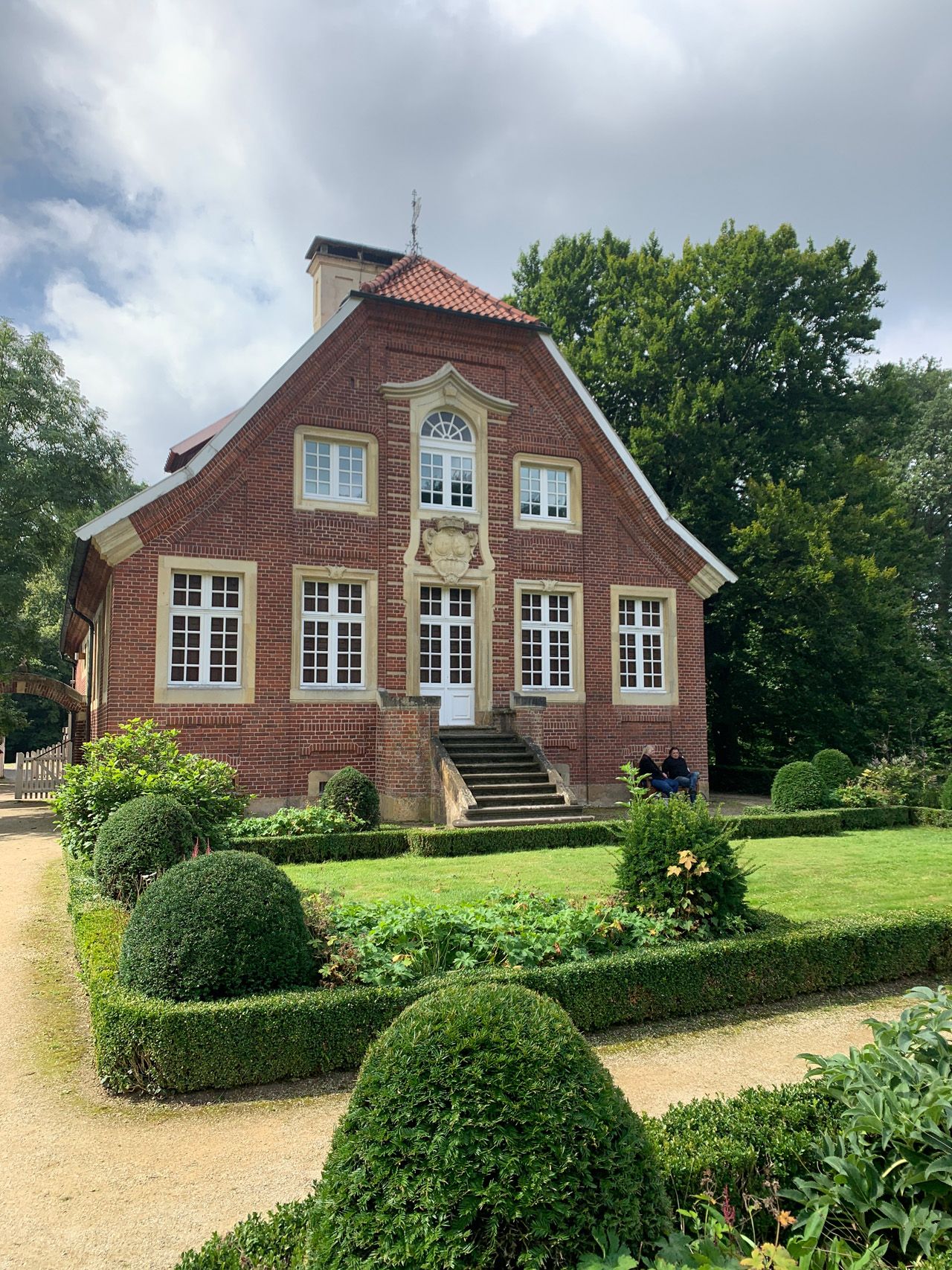
On poetic pathsA guest at Droste-von Hülshoff's
The next morning, the sun wakes me up. A visit to the von Droste-Hülshoff family is on the programme today. After the death of her father, Annette von Droste-Hülshoff lived with her mother and sister at the country estate Haus Rüschhaus, a mixture of Westphalian farmhouse and baroque manor house, which is just a few minutes' cycle ride from Hotel Wilkinghege. Many of her most important works were written in this self-imposed solitude. However, she spent the first thirty years of her life in a different, more sophisticated world, at Burg Hülshoff, a moated castle just ten kilometres from Haus Rüschhaus. Family-owned since the end of the 15th century, the brick Renaissance complex is now a museum that provides an insight into the lifestyles of Münster's nobility during the classical period. Here I meet her again, the exceptional poet, who was considered radically emancipated for her time and placed social issues at the centre of her work: In the family's elegantly furnished dining room hangs another oil portrait of her, which is confusingly similar to the one that guarded my sleep at Wilkinghege Castle. Apparently Johann Joseph Sprick painted it in several versions. I am delighted at the familiar sight, as it almost seems as if Annette von Droste-Hülshoff wanted to bid me a personal and perfect farewell after my three-day journey through her homeland.
The very last message, however, comes from the artist Robert Montgomery, who has installed a neon sign in the castle park: "When we are gone, the trees will riot". Today, Burg Hülshoff also serves as a centre for literature, a place for literature education and an interdisciplinary meeting place for the arts and sciences. The huge grounds offer ideal conditions for performances, readings, festivals, lectures and workshops. I open the picnic basket packed with all kinds of vegan delicacies from the castle restaurant. History, enjoyment, sustainability and zeitgeist - these are the assets that Münsterland has to offer.
Ilona Marx has already travelled to numerous metropolises in NRW and around the world. The heart of the author, copywriter and trend consultant has had a passion for culture, fashion and design since her youth.


